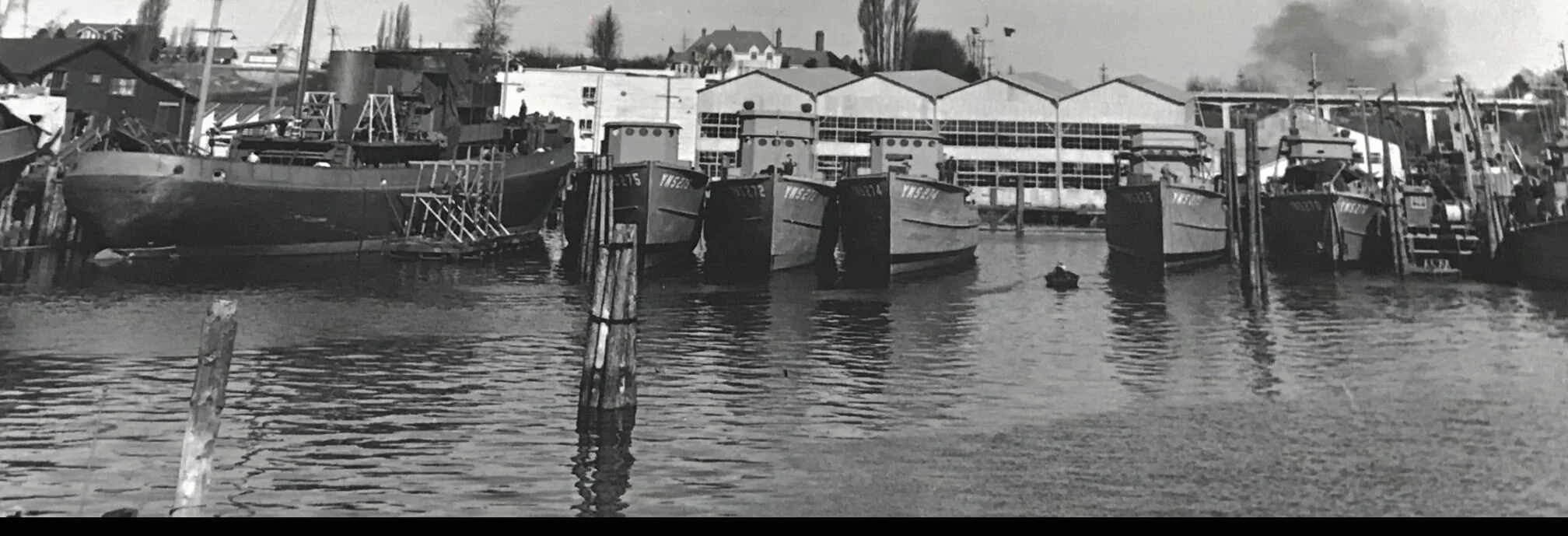
History
At Talbot Group, our Bellingham roots run deep. Since 1941, our family has been working to shape and serve Whatcom County through responsible land development, protection of green space, community engagement, and the creation of jobs. We are committed to making a lasting impact that stands the test of time.
In 1941, Archibald Talbot, a Seattle stockbroker, purchased Bellingham Bay Shipyards, a yard specializing in building wooden hull vessels such as minesweepers, barges and fishing vessels. During the busy war years and following decade, the yard employed over a thousand local workers and artisans, producing more than 150 military and civilian vessels.
In 1946, Arch Talbot founded Bellingham Cold Storage on Port of Bellingham property next to the shipyards. Bellingham Cold Storage consisted of several large warehouses for freezing and storing crops from the local famers, primarily vegetables and berries, as well as seafood from Puget Sound and Alaska, including salmon, halibut and crab.
Arch’s son Jim Talbot assumed the leadership in 1965, growing the company to become the largest portside cold storage facility in the western United States. Jim was a prolific entrepreneur who founded many business ventures over the years, including the construction and operation of several fishing trawlers and large fish-processing vessels.
One of Jim’s most interesting projects was the formation of US-USSR Marine Resources Company International (MRCI), the first ever joint Soviet-American company. Founded in 1976 at the height of cold war hostilities, MRCI defied misconceptions and negative stereotypes prevalent at the time. The venture brought together thousands of Russian and US fishermen, who worked together on the high seas of the Pacific Ocean catching and processing pollock, mackerel, and sole. From 1978 to 1990, MRCI caught and processed approximately 1.5 million tons of fish off the coasts of Oregon, Washington, and Alaska. In 1989, Bellingham formalized ties with the Russian port city of Nakhodka, where MRCI had an office, by establishing Sister City ties that continue to unite our communities today.
Back in Bellingham, Jim purchased a 250-acre parcel in Bellingham just east of I-5, intending to build more warehouses and ancillary food-processing facilities. When the railroad abandoned its rail spur to the area, it forced Jim to reassess his development plans for the tract.
During a trip to Europe, Jim noted the quality architecture and pleasant pedestrian experience prese
nt in older, pre-automobile towns and villages and wondered if a modern American development could duplicate some of those positive attributes. This inspired an idea to build a neighborhood-scale urban village in Bellingham with a mix of residences, shops, services, offices and recreational opportunities. Walkable streets and quality architecture would be the hallmark of this new district.
Woburn Street was built in 1990, and the Dorothy Haggen office building soon after in 1993. In 1996, the City of Bellingham granted the property mixed-use zoning, allowing a greater variety of uses to be build more compactly. In the following years, more buildings were introduced to the area and the outlines of an urban village began to take shape. When Barkley Boulevard was constructed in 1997, Jim adopted the name for the new neighborhood center.
Jim’s children Stowe and Jane Talbot, took the helm in 2005 and have been expanding and adapting the development ever since, with an increasing commitment to sustainability, diversity and health.





